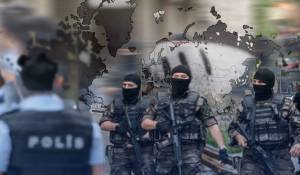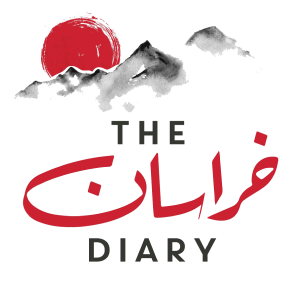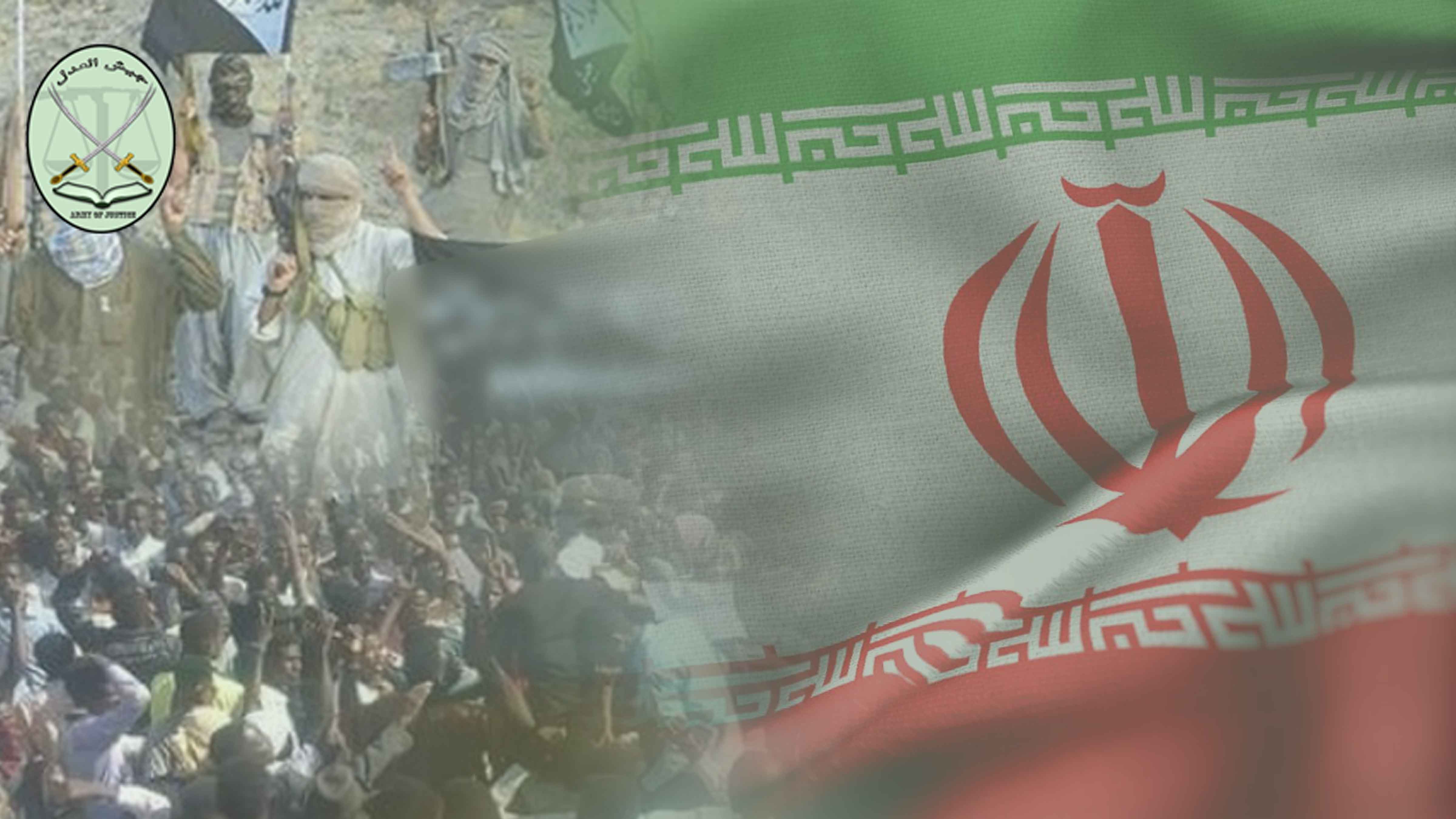
Imtiaz Baloch

December 13, 2025
By | Imtiaz Baloch

On Friday night, armed attackers stormed the Iranian port city of Chabahar in Iran’s Sistan and Baluchestan province. At the same time, the district guards of the country’s Rask City also came under attack. During the initial stages of the attacks, the deputy for security and law enforcement of the Sistan and Baluchestan province confirmed that a minimum of three security personnel had lost their lives in the assaults. Up to the point of this report being filed, Iranian state media has confirmed that at least 11 Iranian security forces personnel and 16 militants have been killed in clashes with attacking militants at different locations in the province.
Jaish Ul Adl, a Sunni militant group operating in the eastern part of the country of Iran, claimed responsibility for the attacks and warned the public to avoid using the Chabahar, Rask, and Sarbaz-Rask routes, saying a chain of operations had begun to thwart any other attacks.
In the early hours of the morning, JuA also claimed responsibility for targeting a military installation in Sarbaz-Rask, Doh Rah of Sarbaz city. The group asserted that it had targeted at least six military installations across Chabahar, Sarbaz, and Rask City. Four of the attacks took place in Chabahar, one in Rask, and the final one in Sarbaz city.
The Chabahar Port and its strategic importance
In February this year, the Afghan Interim Government said it was planning to invest $35 million in Iran's strategic Chabahar Port to reduce dependency on Pakistani ports. Afghanistan and Pakistan have lately been facing escalated tensions. Similarly, India has been actively promoting the Chabahar port project since 2016, when Indian Prime Minister Narendra Modi visited Iran and signed a tripartite agreement with the country, investing $500 million to enhance regional trade and improve connectivity with Afghanistan.
The Indian External Affairs Minister, S. Jaishankar also paid a visit to Iran in January and discussed multifactor cooperation with the country. Taking to his X account (formally known as Twitter), Jaishankar mentioned that “detailed and productive” discussion on establishing a long-term cooperation framework with respect to Chabahar port took place during his visit. The two sides, he said, also exchanged views on the International North-South Transport Corridor.
The North-South Transport Corridor (INSTC) is a multi-modal transportation project that connects several countries, including India, Russia, Iran, Azerbaijan, Belarus, Bulgaria, Armenia, Kazakhstan, Kyrgyzstan, Oman, Tajikistan, Turkiye, and Ukraine.
Jaish militants remain a growing concern amid Pakistan-Iran border tensions
In January this year, Iran and Pakistan exchanged airstrikes in a tit-for-tat response when Iran claimed to hit a JuA hideout in the Panjgur district of Pakistan’s Balochistan region. JuA also confirmed these attacks and said that Iran targeted the families of its fighters inside Pakistan.
Pakistan responded aggressively, launching attacks inside Iranian territory in the Saravan area of Sistan and Baluchestan. The operations resulted in the deaths of at least seven members of the Balochistan Liberation Front who were reportedly hiding inside Iran. According to the Iranian state media, Pakistan's operations in the Saravan area of Sistan and Baluchestan targeted foreign nationals, comprising three women and three children alongside three men.
Violence in Sistan and Baluchestan
The Sistan and Baluchestan province of Iran has witnessed a wide range of protests and armed clashes since September 30, 2022, including two suicide attacks on the Zehadan police station in Rask City.
In December 2023, an assailant attacked the police headquarters in Rask City after an explosion and gunfire erupted in the province. Shortly thereafter, the Iran-based Sunni Baloch armed group Jaish Ul adl (JUA) took responsibility for the attack.
Meanwhile, state media reported that the Sistan and Baluchestan police information center confirmed the attack and initially stated, "In this attack, a number of terrorists were killed and injured, along with several police officers who were injured and martyred."
Later, however, the deputy governor the province, during a conversation with the state media, said that in the terrorist attack on Rask police headquarters, eleven individuals from the Faraja forces were martyred on Thursday night, with several others sustaining injuries. The governor reiterated that the current situation in the city had returned to normal.
The Sistan and Baluchestan province, home to 2.7 million people, ranks among Iran's largest provinces by land area and hosts a large Baloch population. According to the Iranian Data Portal Center, the province's population accounts for 3.47 percent of the country's total population.
Rask City, located on the border with Pakistan, is predominantly inhabited by Baloch and is over 1,500 kilometers away from the Iranian capital of Tehran. Since September 2022, the province has experienced widespread protests following the tragic death of a Kurdish girl named Mahsa Amini at the hands of Iranian military police. Her death, attributed to her attire not meeting Islamic Hijab standards, sparked outrage and demonstrations across the region.
The protesters demanded the demolition of the country’s morality police. The Sunni-majority province of Sistan and Baluchestan faced a severe crackdown after residents protested demanding justice for a 15-year-old girl who was allegedly raped by the city police chief in the port city of Chabahar. The protests were met with heavy-handed measures, and the recent attack by JuA also referenced this incident.
Sistan and Baluchestan after September 30
Data released by various rights groups, including Amnesty International, suggests that since September 30, 2022, at least 100 protesters, bystanders, and worshippers have been killed by security forces in Sistan and Baluchestan province. Among the victims are 16 children. However, it is believed that the actual number of casualties is much higher. Amnesty International is collaborating with Baluchi human rights groups outside Iran, such as Haalvsh, to identify and document those who lost their lives during the unrest.
According to a Kurdish human rights watch group based in Norway, the highest number of deaths among protesting citizens has been reported in several province, particularly in the Sistan and Baluchestan province, which recorded 88 cases, followed by Mazandaran with 15 cases, Tehran and Kurdistan with 11 cases each, and West Azarbaijan (Urmia) and Gilan with 10 cases each. The group also highlighted that at least 11 children lost their lives in the province of Sistan and Baluchestan during the anti-regime protests.
On November 22, the Iran Human Rights Group reported that 488 protesters had been killed by Iranian security forces. It is worth noting that the casualties were spread across 26 provinces, with the highest number of deaths reported in Sistan and Baluchestan.
Meanwhile, the Balochistan Human Rights Group (BHHR), based in Sistan and Baluchestan, pointed out the devastating aftermath of what they termed the "Bloody Friday of Balochistan." They reported a tragic toll of at least 103 Baloch citizens, including innocent children, women, and men of various ages.
Since September 30 last year, a significant increase in protests has been witnessed throughout Sistan and Baluchestan, occurring every Friday. During these demonstrations, Baloch Sunni scholars have strongly criticized the Iranian regime for its suppression of civilian rights and women's rights across the nation.
Sistan and Baluchestan also witnessed an escalation of armed attacks against the security forces by a lesser-known organization “Unknown Mazars of Baluchistan” which claimed some attacks last year. Recently, however, the group has not carried out any attacks.
The political dynamics in Sistan and Baluchestan differ significantly from those in Pakistani Balochistan. Due to historical repression by the Iranian regime against secular and progressive voices, many dissenting Baloch activists have chosen to leave their homeland. This exodus has created opportunities for religious leaders to emerge and gain influence.
Prominent religious clerics like Imam Zahedan Molovi Abdul Hameed Ismailzai and the Friday Imam of Kash, among others, have established a strong presence among the people. They play an important role during the series of demonstrations that occur every Friday, particularly during Friday prayers at mosques like Makki Mosque and others, which have become central hubs for protests in the province.
A trace of violence since 30 September 2022
Aside from the political unrest, Iran has witnessed a surge in violence targeting the Iranian Revolutionary Guards, police personnel, and border guards throughout the year. In April 2023, Saravan District police chief Ali Raza Shahraki was assassinated by unknown attackers. Similarly, in May of the same year, five Iranian border security guards were killed, and two others were injured during a clash in the border areas near Saravan city, close to the Pakistani boundaries.
Sunni militant groups like Jaish Ul Adl have been involved in suicide attacks, such as their infiltration into Zahedan city police station. Iranian security forces took over two hours to neutralize the attackers. Jaish Ul Adl has frequently released statements expressing support for protesters while also issuing threats against Iranian authorities.
Other factors behind the escalation of violence in the province
The people of Zahedan rallied in protest to honor those who were directly targeted and arrested during previous demonstrations. On September 3, clashes, stone-throwing, and roadblocks were reported in various cities across Sistan and Baluchestan. Mass arrests of protesters were also reported in different parts of the province, including cafes in Zahedan. Reports show that dozens of protesters, including women and children, were arrested in cities like Zahedan, Mirjaveh, Kash, and other areas, with at least 51 individuals detained so far.
Women and children actively participated in these protests, and independent organizations reported that seven female prisoners in Iran's Evin prison expressed solidarity with the demonstrators in Sistan and Baluchestan.
On the eve of September 30, Amnesty International, on the X platform, stated that "no official has been held accountable for the unlawful killings of scores of men, women and children from Iran's oppressed Baluchi minority on 30 Sept 2022”.
Iran Human Rights (IHR NGO), on X, expressed similar concerns in its post and stated that a year has passed since Zahedan’s #BloodyFriday when at least 104 people, including 14 children and 4 women, were gunned down with assault rifles and machine guns within hours after worshippers gathered to protest after Friday Prayer. Some of those killed were bystanders. It added that despite the atrocities, the perpetrators of this heinous crime have not been held accountable.
The Iranian state media has made statements denying any reports of firing in Sistan and Baluchestan. The media outlet further claimed that despite calls for protests, the people of the province managed the situation peacefully and did not participate in the demonstrations. According to the statement, worshippers gathered at Makki Mosque and left after prayers without any incidents of violence. The media also mentioned that traffic in the city remained normal throughout the day, and there were no reports of shootings. The media also dismissed images circulating online suggesting injuries around Makki Mosque, stating that the images were not new and did not depict any recent incidents.